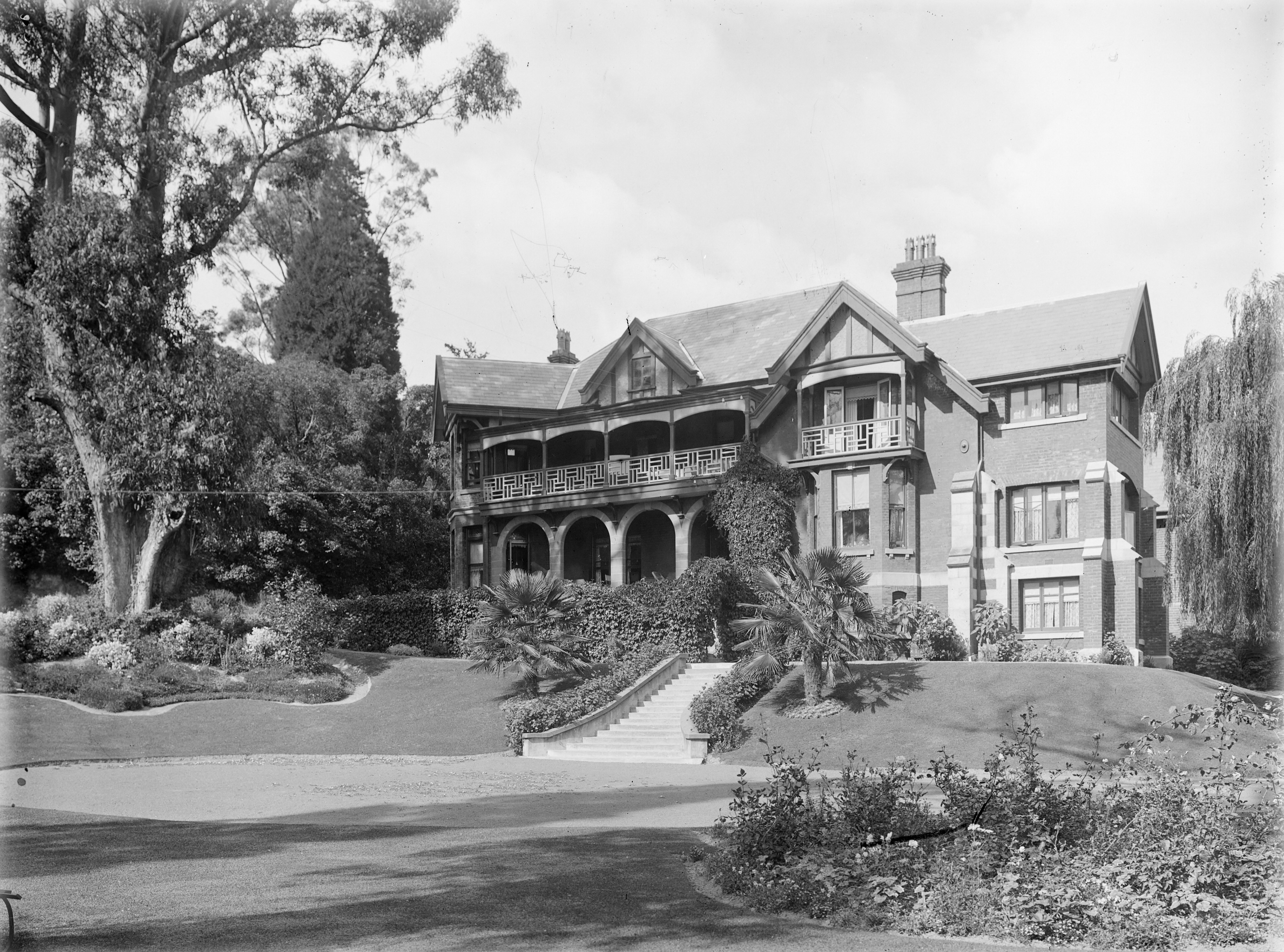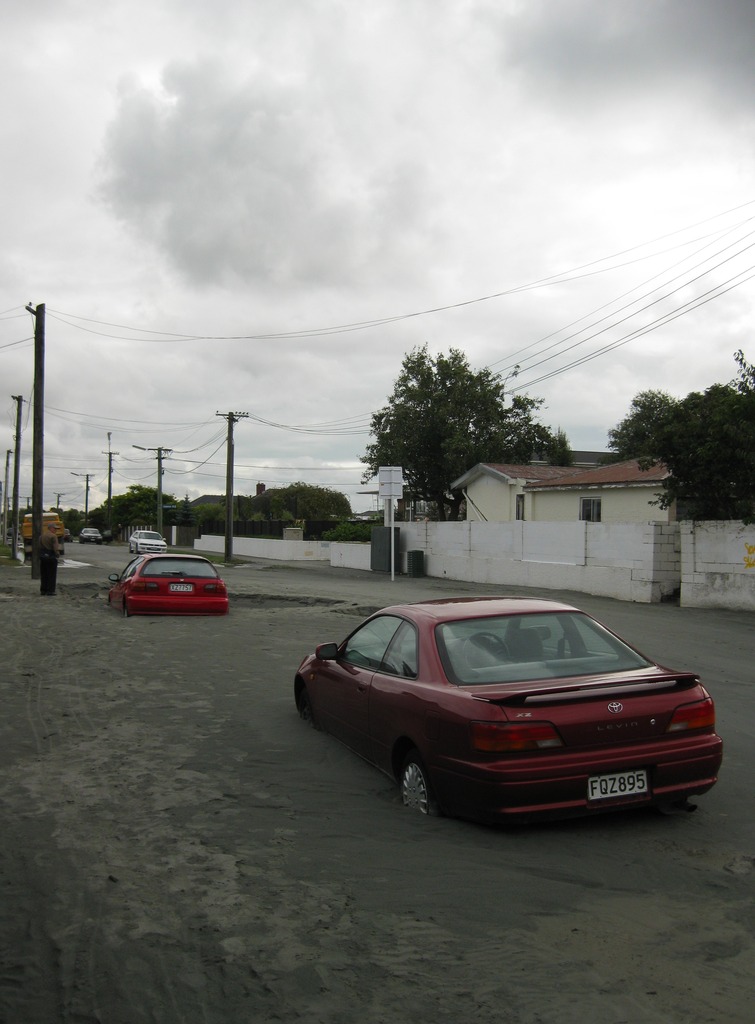|
Hugh Murray-Aynsley
Hugh Percy Murray–Aynsley (8 October 1828 – 22 February 1917) was a 19th-century Member of Parliament in Canterbury, New Zealand. Early life Murray-Aynsley was born in Gloucestershire, England, in 1828. His father was John Murray-Aynsley (1795–1870) from Little Harle Tower, his grandfather was Lord Charles Murray-Aynsley (1771–1808), and his great-grandfather was John Murray, 3rd Duke of Atholl (1729–1774). His mother was Emma Sarah Peach, and his mother's grandfather was Henry Cruger. His grandfather was baptised as Charles Murray and upon his marriage to Alicia Mitford (1768–1813), the heiress of her great-uncle, Gawen Aynsley, Esq, he assumed the additional surname Aynsley. Murray-Aynsley was educated privately; his tutor later became Bishop of Ely. For a time, Murray-Aynsley managed a sugar plantation in Trinidad for his cousin, Sir William Miles, with the firm operating as Miles & Co. He came to Melbourne on the ''Royal Bride'', and from there to New Zealand in ... [...More Info...] [...Related Items...] OR: [Wikipedia] [Google] [Baidu] |
Canterbury Province
The Canterbury Province was a Provinces of New Zealand, province of New Zealand from 1853 until the abolition of provincial government in 1876. Its capital was Christchurch. History Canterbury was founded in December 1850 by the Canterbury Association of influential Englishmen associated with the Church of England. (An attempt was initially made to restrict residence in the province to members of the church but this was abandoned.) The ''Charlotte Jane'' and the ''Randolph (ship), Randolph''—the first two of the First Four Ships—arrived in the area on 16 December 1850, later celebrated as the province's #Anniversary Day, Anniversary Day. In 1852, the Parliament of the United Kingdom passed the New Zealand Constitution Act 1852, which amongst other things established Provinces of New Zealand, provincial councils. The Constitution contained specific provisions for the Canterbury Association; the first being that the new General Assembly (New Zealand Parliament) could not amend ... [...More Info...] [...Related Items...] OR: [Wikipedia] [Google] [Baidu] |
Trinidad
Trinidad is the larger and more populous of the two major islands of Trinidad and Tobago. The island lies off the northeastern coast of Venezuela and sits on the continental shelf of South America. It is often referred to as the southernmost island in the West Indies. With an area of , it is also the List of Caribbean islands by area, fifth largest in the West Indies. Name The original name for the island in the Arawak language, Arawaks' language was which meant "Land of the Hummingbird". Christopher Columbus renamed it ('The Island of the Holy Trinity, Trinity'), fulfilling a vow he had made before setting out on his third voyage. This has since been shortened to ''Trinidad''. History Island Caribs, Caribs and Arawaks lived in Trinidad long before Christopher Columbus encountered the islands on his third voyage on 31 July 1498. The island remained Spanish until 1797, but it was largely settled by French colonists from the French Caribbean, especially Martinique.Besson, ... [...More Info...] [...Related Items...] OR: [Wikipedia] [Google] [Baidu] |
New Zealand Shipping Company
The New Zealand Shipping Company (NZSC) was a shipping company whose ships ran passenger and cargo services between Great Britain and New Zealand between 1873 and 1973. A group of Christchurch businessmen founded the company in 1873, similar groups formed in the other main centres, to counter the dominance of the Shaw Savill line controlled from London and the (Scotland-Dunedin) Albion line. There were seven initial directors: John Coster, chairman, George Gould Snr., (father of George Gould), John Thomas Peacock, William Reeves, Robert Heaton Rhodes, John Anderson, and Reginald Cobb (died 1873) representing the New Zealand Loan & Mercantile Agency. The similar groups of businessmen in Dunedin and Wellington soon joined this Christchurch company followed by the Auckland group. They completed the four-main-centre link in July 1873. Hon. John Johnston Wellington, John Logan Campbell Auckland, and Evan Prosser of Dunedin were elected to the main board. [...More Info...] [...Related Items...] OR: [Wikipedia] [Google] [Baidu] |
Christchurch City Libraries
Christchurch City Libraries is operated by the Christchurch City Council and is a network of 21 libraries and a mobile book bus. Following the 2011 Christchurch earthquake the previous Christchurch Central Library building was demolished, and was replaced by a new central library building in Cathedral Square, ''Tūranga'', which opened in 2018. Early history The library began as the Mechanics' Institute in 1859, when 100 subscribers leased temporary premises in the then Town Hall. The collection consisted of a few hundred books. By 1863, with the help of a grant from the Provincial Government, the Mechanics' Institute opened a building on a half-acre of freehold land on the corner of Cambridge Terrace and Hereford Street, purchased the year before at a cost of £262.10.0. This site was to remain the home of the library until 1982. Debt, dwindling subscribers and other problems forced the institute to hand over the building to the Provincial Government in 1873. By this time t ... [...More Info...] [...Related Items...] OR: [Wikipedia] [Google] [Baidu] |
Mount Hutt
Mount Hutt ( mi, Opuke) rises to the west of the Canterbury Plains in the South Island of New Zealand, above the braided upper reaches of the Rakaia River, and 80 kilometres west of Christchurch. Its summit is 2190 metres above sea level. The New Zealand Ministry for Culture and Heritage gives a translation of "place of the hill" for ''Ōpuke''. Ski field The mountain is home to a commercial alpine ski area offering 3.65 square kilometres of skiable terrain and a vertical of 683 metres. The ski field is owned and operated by NZSki It caters for a wide range of skier and snowboarder abilities, with two surface/conveyor lifts, a high-speed six seater chairlift, a high-speed eight seater chairlift and a fixed-grip three seater chairlift. The lift infrastructure provides access to a wide range of beginner, intermediate and advanced runs, access to large off-piste areas and several terrain parks. The most advanced runs on the mountain are through the rock formations at the top of the ... [...More Info...] [...Related Items...] OR: [Wikipedia] [Google] [Baidu] |
2011 Christchurch Earthquake
A major earthquake occurred in Christchurch on Tuesday 22 February 2011 at 12:51 p.m. local time (23:51 UTC, 21 February). The () earthquake struck the entire of the Canterbury region in the South Island, centred south-east of the central business district. It caused widespread damage across Christchurch, killing 185 people, in New Zealand's fifth-deadliest disaster. Christchurch's central city and eastern suburbs were badly affected, with damage to buildings and infrastructure already weakened by the magnitude 7.1 Canterbury earthquake of 4 September 2010 and its aftershocks. Significant liquefaction affected the eastern suburbs, producing around 400,000 tonnes of silt. The earthquake was felt across the South Island and parts of the lower and central North Island. While the initial quake only lasted for approximately 10 seconds, the damage was severe because of the location and shallowness of the earthquake's focus in relation to Christchurch as well as ... [...More Info...] [...Related Items...] OR: [Wikipedia] [Google] [Baidu] |
Heritage New Zealand
Heritage New Zealand Pouhere Taonga (initially the National Historic Places Trust and then, from 1963 to 2014, the New Zealand Historic Places Trust) ( mi, Pouhere Taonga) is a Crown entity with a membership of around 20,000 people that advocates for the protection of ancestral sites and heritage buildings in New Zealand. It was set up through the Historic Places Act 1954 with a mission to "...promote the identification, protection, preservation and conservation of the historical and cultural heritage of New Zealand" and is an autonomous Crown entity. Its current enabling legislation is the Heritage New Zealand Pouhere Taonga Act 2014. History Charles Bathurst, 1st Viscount Bledisloe gifted the site where the Treaty of Waitangi was signed to the nation in 1932. The subsequent administration through the Waitangi Trust is sometimes seen as the beginning of formal heritage protection in New Zealand. Public discussion about heritage protection occurred in 1940 in conjunction with t ... [...More Info...] [...Related Items...] OR: [Wikipedia] [Google] [Baidu] |
George John Smith
Colonel George John Smith (1862–1946) was a New Zealand Member of Parliament for the Christchurch (New Zealand electorate), City of Christchurch electorate in the South Island, and later a member of the Legislative Council. Early life Smith was born in Consett in County Durham and educated at the Wesleyan Church School in Newcastle upon Tyne. Following that, he worked at the office of the Government solicitors. He came to New Zealand in 1879. He was a lawyer and businessman in Christchurch. He was a councillor on the Sydenham Borough Council. A strong prohibitionist, Smith was elected to the Sydenham, New Zealand, Sydenham Licensing Committee in 1891, which was determined to refuse all licences in the borough. Several members including Smith were removed from this position by order of the Supreme Court for "incurable bias". Member of Parliament Smith then stood for parliament. In the 1893 New Zealand general election, 1893 election, he came second in the three-member ... [...More Info...] [...Related Items...] OR: [Wikipedia] [Google] [Baidu] |
Alexander Lean
Alexander Lean (21 May 1824 – 20 November 1893) was a New Zealand runholder, architect, military volunteer and musician. He was born in London, England on 21 May 1824. His most valuable contribution as an architect were the Christchurch Supreme Court buildings, which were progressively demolished between 1974 and 1985. In 1853, Lean was the original purchaser of land at the bottom of Rapaki Track next to the Ōpāwaho / Heathcote River, which he called Riverlaw. He sold this land in 1859 to Michael le Fleming and with an additional intermittent owner, the property was purchased by Hugh Murray-Aynsley in 1862. Lean acted as the returning officer In various parliamentary systems, a returning officer is responsible for overseeing elections in one or more constituencies. Australia In Australia a returning officer is an employee of the Australian Electoral Commission or a state electoral c ... for the Christchurch electorate in the when he suddenly died on 20 November 1893 ... [...More Info...] [...Related Items...] OR: [Wikipedia] [Google] [Baidu] |
Heathcote River
Heathcote may refer to: Places in Australia *Heathcote, New South Wales, a suburb of Sydney **Electoral district of Heathcote, a seat in the New South Wales Legislative Assembly **Heathcote National Park ** Parish of Heathcote a parish of Cumberland County *Heathcote, Victoria **Heathcote-Graytown National Park ** Heathcote wine region * Heathcote Junction, Victoria * Heathcote South, Victoria * Point Heathcote, Western Australia in Canada * Heathcote Lake, Ontario in England * Heathcote, Ilkley, a villa in West Yorkshire * Heathcote, Derbyshire * Heathcote, Shropshire * Heathcote, Warwickshire, a suburb of Leamington Spa in New Zealand * Heathcote Valley, a suburb of Christchurch ** Heathcote River ** Heathcote (New Zealand electorate) in the United States * Heathcote Community, Maryland * Heathcote, New Jersey ** Heathcote Brook ** Withington Estate, also known as Heathcote Farm People as a forename * Heathcote Helmore (1894–1965), New Zealand architect *Heathcote ... [...More Info...] [...Related Items...] OR: [Wikipedia] [Google] [Baidu] |
Stock And Station Agency
Stock and station agencies are businesses which provide a support service to the agricultural community. Their staff who deal with clients are known as stock and station agents.In his book Simon Ville states: "The term stock and station agent is variously defined as the buying and selling of rural properties and stock or dealing in land, products and supplies, ''Macquarie Dictionary'' (2nd edn, Sydney, 1988), p 985, ''Australian Concise Oxford Dictionary'' (2nd end, Melbourne, 1992) p 1141.However the business of most leading agents was much wider than this. The terms "pastoral" or "farming" agent might better convey the broad meaning. The three terms are used interchangeably in this book (''The Rural Entrepreneurs'') as was the practice of the firms themselves." Simon Ville, page 219, ''The Rural Entrepreneurs'' Cambridge University Press, 2000. They advise and represent farmers and graziers in business transactions that involve livestock, wool, fertiliser, rural property and equip ... [...More Info...] [...Related Items...] OR: [Wikipedia] [Google] [Baidu] |





